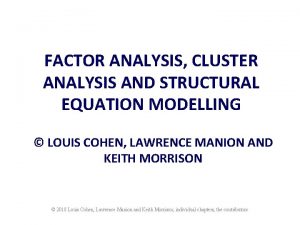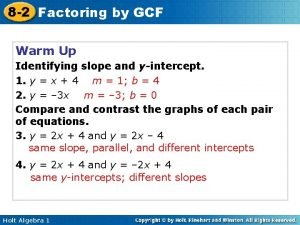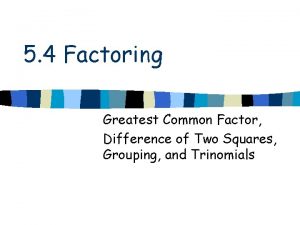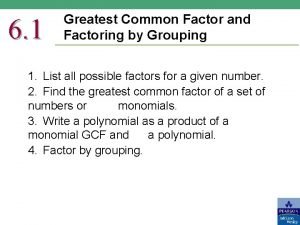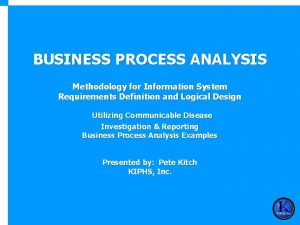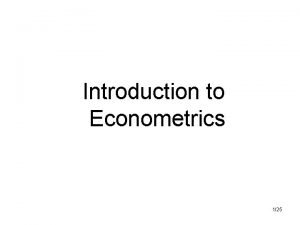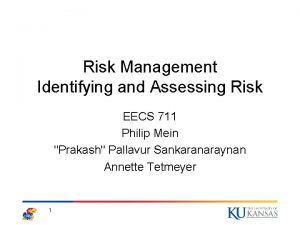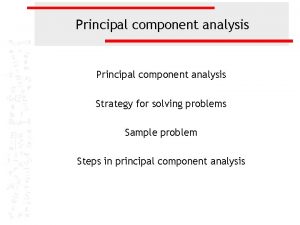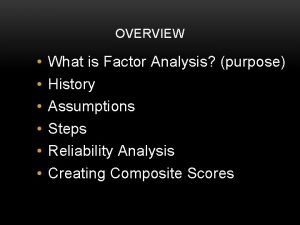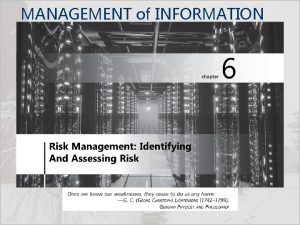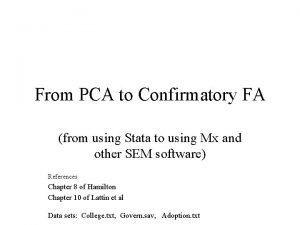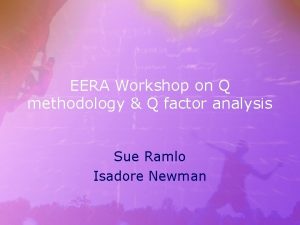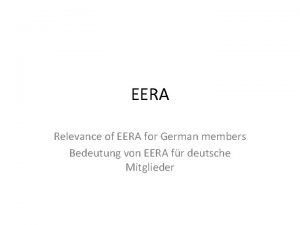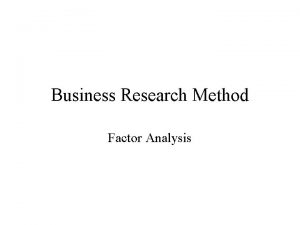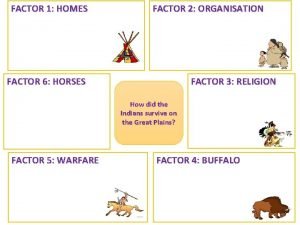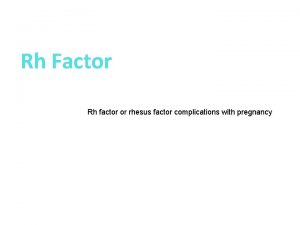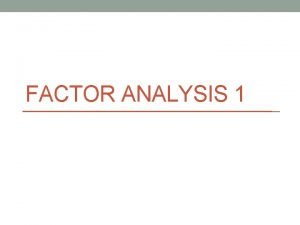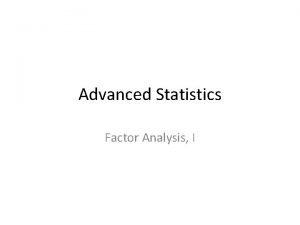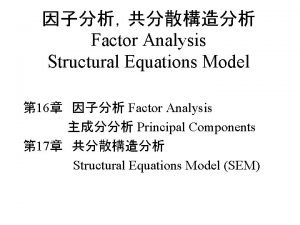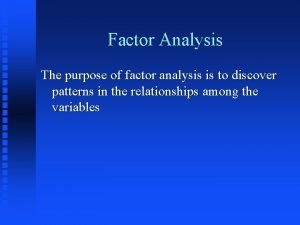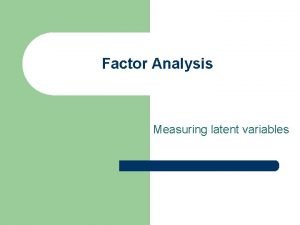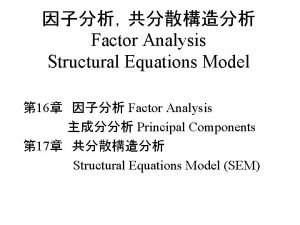EERA Workshop on Q methodology Q factor analysis



















- Slides: 19

EERA Workshop on Q methodology & Q factor analysis Sue Ramlo Joe Jurczyk Al Herbert Isadore Newman

Workshop Outline n Introduction to Q methodology q q q n Q factor analysis q q q n Sorting items onto a normal Gaussian distribution Concourse of items & the Q sample Analyzing the sorts using PQ Method – factors & interpretation How is Q FA different from Q method? Using QUANAL to find topologies in Q FA Using PQ Method for Q FA Why groups of people?

Introduction to Q methodology Overview n Allows a researcher to investigate the views, or perspectives, of a person or a group of people. n The process involves sorting items (typically statements) into a normal Gaussian distribution. n Analysis involves factor analysis that groups people, not items. FA – grouping based on correlation among the participants’ sorts.

Sorting items onto a normal Gaussian distribution n Pre-sort into 3 piles LEAST like my view (~14 statements here) n Neutral view about this statement MOST like my view (~14 statements here) Distribute (& redistribute) to fit specific normal Gaussian distribution. (usually most disagree to most agree)

Now you try it! n Condition of instruction - “Because you’ve been working so hard, you have been ordered by your boss/department chairperson to take a 5 -day vacation by yourself or with your family, all expenses paid. Rate the following items on a scale of “most enjoyable” (+5) to “most unenjoyable” (-5)…. ” Most unenjoyable (~7 items) Neutral view about this statement (~7 items) n Pre-sort into 3 piles n Distribute (& re-distribute) to fit specific normal Gaussian distribution. (usually most disagree to most agree) MOST enjoyable (~7 items)

Introduction to Q methodology – historical background n Developed in 1935 by William Stephenson q Physicist-psychologist q Student of Spearman q A Study of Behavior, 1955 n Q because of its philosophical similarity to the physics field of Quantum Mechanics n Most often used in fields of psychology, marketing, advertising, political science… n Mixes quantitative & qualitative aspects of research

Why not another method to determine views? n Alternatives for determining perspectives are not as powerful as Q. n Likert scale evaluations and rank ordering lead to the loss of meaning (Mc. Keown, 2001). n Because Q measures personal opinion regarding a concourse of items related to a topic, validity is not a consideration (Brown, 1999).

What is meant by subjectivity? n n What do you see? Bunny? Duck? Is one right & the other wrong or are they both just different views?

Any Q study starts with a concourse: n Can consist of words / statements, pictures, sounds, smells… n Subjective q q Not “It’s raining” But can be “the rain makes me feel sad” –or- “I love to walk in the rain. ” n Items are interpreted by participant – removes the view of the researcher & the issue of validity / reliability. n Select the Q sample from the concourse n Try to “balance” the Q sample

Concourse of items – 3 possibilities “Naturalistic” statements - taken from participants’ oral or written n communications. n q Interviews q Focus Groups “Ready made” statements - from sources other than those of the participants’ communications. q Likert survey items q Based on knowledge of researcher w/o interviews n Hybrid - combine both “naturalistic” and “ready made” items. n One is not inherently superior to the other (Mc. Keown & Thomas, 1988). n Researcher selects the type best suited to the project at hand

Q sample – select items from the concourse to use in the study. n Example: Selection from a Q sample of 44 (chosen from a concourse of 53) 1 What I learn from textbook depends on how I use it to study in this class. 23 I can tell when I understand the material in this class. 2 I need to learn how to study more effectively to succeed in this class. 24 I feel comfortable applying what I learned in this class to the real-world. 3 Working hard on difficult problems does not help me learn in this class. 25 Doing homework helps me learn in this class. 4 I don't have to work hard to learn in this class. 26 Reading the textbook helps me learn in this class. 5 I need to learn how to learn in this class. 27 I like the exactness of math-type subjects. 6 I have very little control over how much I learn in this course. 28 I often think about how well I understand the topics in this class. 7 In this class, if I can't understand something right away, I will keep on trying 29 What I learn in this class will help me in other classes. 8 Working with classmates inside &/or outside this class helps me learn. 30 What I learn in this class will help me when I get a job in my field.

Condition of instruction n Participants sort based upon a condition of instruction (or multiple conditions). q n E. g. Sort the following statements as they relate to your views about learning in this class. The statements are matters of subjective opinion and may mean different things to different people. q e. g. I worked hard in this class.

Analyzing Q sorts n SPSS & SAS not really designed for Q sorts – you mess with weightings, etc. n Need software designed for Q methodology q q q QUANAL PCQ PQMethod

Factor Analysis n Higher order correlation n Used to determine patterns in a data set n R-factor analysis groups items (people are rows, items are in columns). Factors represent similar items. n Q-factor analysis groups people (people are in columns, items are in rows). The factors represent people with similar topologies. n Q methodology is not Q FA but does group people based upon their VIEWS on a subject. Factors represent similar views about a topic.

PQ Method to determine factors & assist in their interpretation n PQMethod q q q n Choices q q n Free download (start at www. qmethod. org) DOS based Designed for handling Q sort entry and analyses Centroid versus Principle Components factor extraction Graphical hand rotation versus Varimax Start PQMethod

PQMethod Analyses n Creates print out with: q q q Factor loadings Factor correlations Distinguishing statements Consensus statements, etc Example - knowledge Tech Physics sorts Ramlo 2006. lis.

Q factor analysis n How is Q FA different from Q method? n Using QUANAL to find topologies in Q FA

QFA run in PQMethod n Create z-scores for each item (if the items all have the same scale, skip this step). n Rank order items for each person (lowest to highest) and then give a grid score (e. g 1 to 6, -2 to 2, etc). Note that PQ Method allows for a scale up to 13 places. n Unlike Q sorts, QFA does not lend itself to a grid that has any columns deeper than one layer. This is important because we are analyzing the topologies of the items. n The *. lis file contains similar outputs to that of QUANAL including distinguishing items for pairs of factors, consensus items, etc.

Why groups of people? q q If groups are known a priori, use discriminative analyses If groups are unknown, need Q FA to determine groups without sorts; Q method with sorts
 Factor analysis
Factor analysis Ill methodology workshop
Ill methodology workshop Kmo and bartlett's test interpretation
Kmo and bartlett's test interpretation Lesson 8-2 factoring by gcf
Lesson 8-2 factoring by gcf Factoring greatest common factor
Factoring greatest common factor Peak factor formula
Peak factor formula Example of factor relating question
Example of factor relating question Factor gcf
Factor gcf Greatest common factor of 36 and 48
Greatest common factor of 36 and 48 Business process analysis methodology
Business process analysis methodology Major tools of ssadm
Major tools of ssadm Structured system of communication
Structured system of communication Methodology of econometric analysis
Methodology of econometric analysis Ranked vulnerability risk worksheet
Ranked vulnerability risk worksheet Weighted factor analysis worksheet
Weighted factor analysis worksheet Communalities in factor analysis
Communalities in factor analysis Communalities in factor analysis
Communalities in factor analysis Factor loadings meaning
Factor loadings meaning Information asset classification worksheet
Information asset classification worksheet Stata confirmatory factor analysis
Stata confirmatory factor analysis


